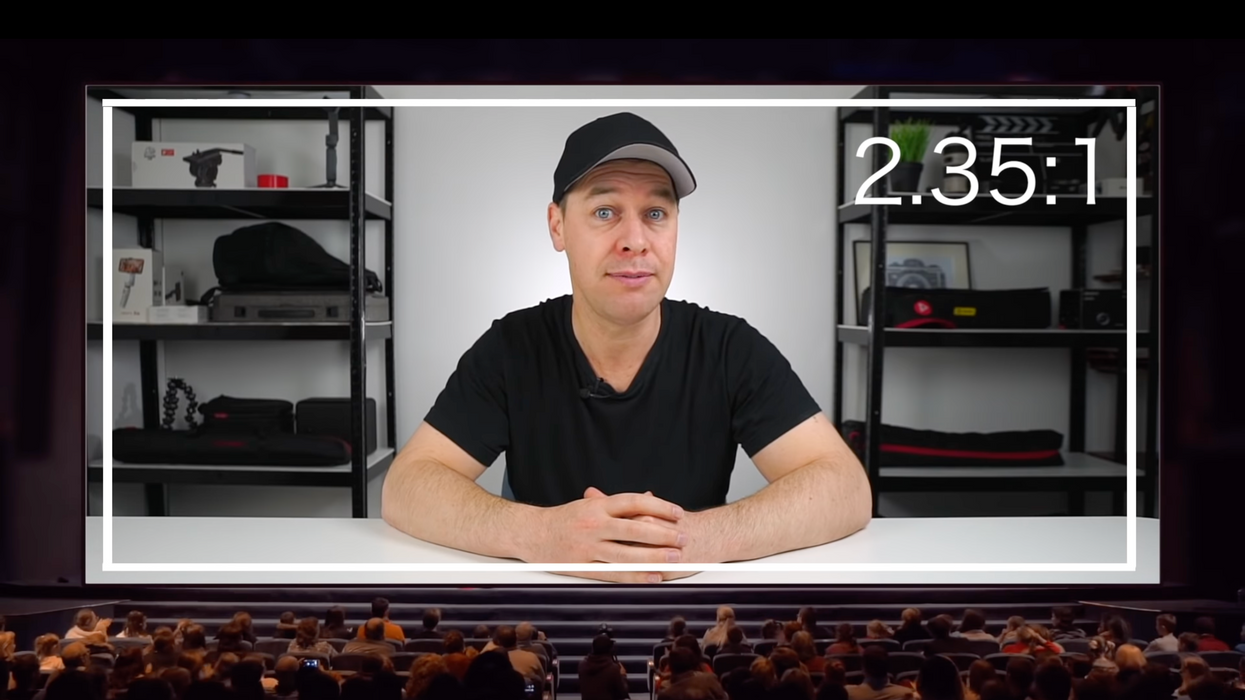3 Tips to Make Your Next Film More Cinematic
We all want our shots to look and feel cinematic. But how do we achieve this?

Who doesn’t love free tips to help improve their next film? Well, we’ve got a few ones that use all kinds of equipment, from things that could be around your house to some higher-end equipment that have been sitting in your shopping cart for some time now.
In this video from Learn Online Video, we learn some DIY tricks and tips and some more expensive and professional tips that can help elevate your next film for that cinematic quality we all know and love. Check out the video below, then let's dive deeper.
Smooth Camera Movement
If you want to replicate the smooth Hollywood style of footage, try using a gimbal.
Gimbals come in so many different styles and sizes from a smartphone gimbal to a DSLR and mirrorless gimbal. Any gimbal you use is going to reduce any camera shake. So how do you know which one you should use? Well, you could check out our gear guide on the subject to start.
The smartphone gimbal is going to be the cheaper option. The more professional option will be the Zhiyun Smooth-X 2s. It provides the perfect Hollywood feel for your shot and pretty much eliminates any camera shake. Overall, we prefer the DJI RS 2.
If you are in need of a crane-like shot, attach the gimbal to a light stand.
Sliders are another must. It’s another way to create that smooth style your film needs. Learn Online Video encourages a mini hand slider that can easily fit into a backpack. The beauty of a hand slider is that you get the exact movement you’re looking for and don’t need any batteries whatsoever. The downside is that the hand slider does require a bit of skill.
If you’re by yourself and don’t have the skill for the hand slider, a motorized one works just as well. The motorized slider is perfect for solo shoots and provides a bit more movement. Most of the motorized sliders are great for heavier cameras and can be controlled by an app on your phone.

Find the right lighting
Lighting is the holy grail of cinema. Without the perfect lighting, the actors and actresses would have harsh shadows cast on their faces, and the whole shot would look dull. To create a shot with depth, get the best lighting possible.
The best and free option is the sun. Remember, the time of day is super important. The best time to shoot in the daylight is during golden hour (sunrise or sunset). This provides excellent lighting that gives depth to your shot and bathes the whole shot in a nice warm, golden color.
Practical light—such as lamps, candles, or LED lights—provides great light for indoor shoots. You can move these light sources around to create a mood that fits the shot. For a trendy look, try using tube lights to create a neo-noir feel.
Looking for a more expensive option, try a good set of LED video lights with a short box. Beware, if you go for the cheaper option, you might get a green or magenta tint to the video that requires color correction in post-production.

The proof is in the editing
There are many elements to filmmaking that make a shot feel cinematic, but editing is like the cherry on top. There are so many small details that you can add to your shot after filming is finished.
One way to go about this is changing up the ratio. Films that are shot for the theater are shot in a 2.35:1 ratio. To replicate this, add two black bars to the video. It seems simple, but the differences are drastic.
Another way to make the mood, style, and feel of your film feel cinematic is color grading. You can color grade each shot or download software that styles the whole scene for you quickly.
Lastly, if you don’t have enough footage and music to make the scene feel full, add stock footage. Drone shots of the landscape and some music can fill a scene and add more depth and mood to your film.

All of these tips will help your film feel more cinematic and ready to be projected on the big screen!
What tip are you excited to try out in your next film? Let us know below!
Source: Learn Online Video












